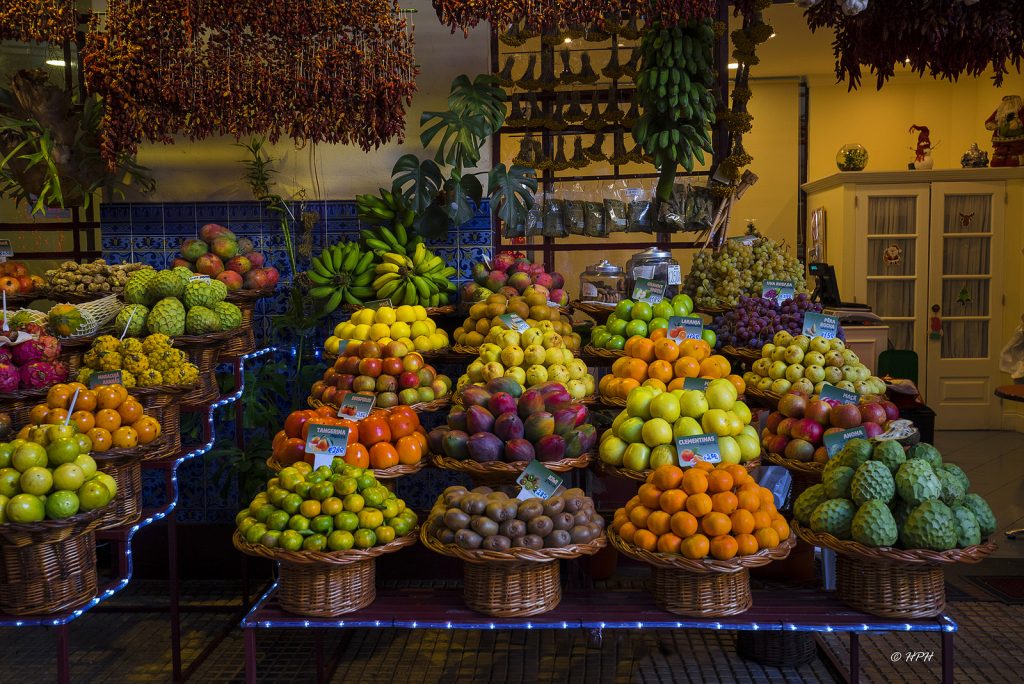Part 1: The Ultimate User’s Guide to Portuguese Cheese
Like wine, cheese is an important and valued part of Portuguese cuisine and one that is typically overlooked by much of the world. Portugal boasts of various high-quality artisanal cheeses, which are primarily produced in the central mountainous and plateau regions using sheep’s and goat’s milk. The islands of the Azores are also famed cheese producers, but unlike the mainland, cheese is mainly produced from cow’s milk. Most cheese production occurs in the winter months when the temperature of the women’s hands is cold enough to work the cheese in the typical granite cold cellars, in the northern regions of Portugal, but small production still occurs in the spring, summer and fall months throughout the country.
There are approximately 15 known styles of Portuguese cheese to savor in Portugal, most of which have been given the designation of Denominação de Origem Protegida (DOP) or Protected Designation of Origin (PDO). In the same vein as the DOC or DO for wine, the DOP guarantees that the cheese is produced within the demarcated region using the traditional methods and ingredients. These cheeses are named and labeled with their city or town of origin and the DOP label of approval. However, one can find numerous other cheeses produced in the same style that are produced in nearby towns or regions without the DOP designation and are therefore labeled with either with the larger regional label or simply sheep, goat or cow’s milk cheese of a particular style. And like wine, many of these “non-DOP approved” cheeses are as good, if not better than their DOP counterparts, and of course, sold at a much lower price.

As I’m a die-hard cheese fan, I’ve come to adore the wide range of Portuguese cheeses available here in Lisbon, but unfortunately, many people are not familiar with the incredible diversity available when visiting Portugal. Hence, I’ve decided to do an in-depth “special report” to provide you not only with the basics in terminology but in style and flavor as well. In part 1 and 2, I will give an overview of the most renowned and loved cheeses in Portugal of which the majority are DOP designated. However, instead of classifying them by region or type of milk used, I’ve broken them down into 4 categories, each grouped with cheeses similar in aroma, flavor, and texture.
In this post, I will cover 2 of the 4 categories, “A Lil’ Stinky But Smooth And Creamy” and “Not Too Soft, Not Too Hard And Not Too Stinky”. Below I have also included a foreigner’s guide of translated Portuguese cheese terms commonly found on packaging and menus so that visitors will be able to easily select, order or purchase a cheese that’s right for them or their wine without a problem.
The last post will be an accumulation of locals and non-locals interviewed on their favorite Portuguese wine and cheese pairings, which will also include both Catavino’s and my favorites as well. So sit back, relax and let me introduce you to the real and wonderful world of Portuguese cheese!
Queijo Flamengo: Portugal’s “equivalent” to the generic American cheese*: Artisanal cheeses play a big part in the Portuguese diet but just like the pre-packaged, pre-sliced yellow American cheese we use in the US for everyday sandwiches, the Portuguese have Queijo Flamengo for theirs. Flamengo, meaning Flemish in Portuguese, is a direct copy of the Dutch Edam and the most popular style bought in supermarkets around the country. If you order a sandwich or “tosta” at a local café or restaurant here, this is what you’ll get. But high-quality Flamengo does exist and is sold in wedges or rounds; the most popular brand being Limiano from the city of Ponte de Lima in the northern region of Minho.
Know Thy Cheese Terms in Portugal
| DOP- Like DOC in wine, designated to cheeses produced in their traditional area | Velho- Old, designation given to cheeses that have been aged at least 90 days or more |
| Curado, Semi-Curado- Cured, Semi-Cured | Amanteigado- “Smooth Like Butter”, good for spreading on bread! |
| Mole/ de Pasta Mole, Semi-Mole- Soft, Semi-Soft | Duro/ de Pasta Dura, Semi-Duro- Hard, Semi-Hard |
| Seco- Dry | Leite – Milk |
| Leite de Vaca- Cow’s Milk | Leite de Ovelha( “o-vayl-ya”)- Sheep’s Milk |
| Leite de Cabra/Cabreiro- Goat’s Milk | Cru- Raw |
| Gordura- Fat (in foods) | Picante– Spicy |
| Casca- Casing, wrapping, shell | Ligeiro/a- Light (in consistency and/or flavor) |
| Sabor Suave- Smooth Flavor | Sabor Forte- Strong Flavor |
| Queijo em Barra- Block Cheese | Queijo em Fatias- Sliced Cheese |
A Lil’ Stinky But Smooth And Creamy
 The cheeses I selected for this category all have about the same consistency as soft, (but sticky) butter. No slicing allowed for these! The traditional and easiest way to serve them is by cutting off the top of the rind and using a spoon to scoop out the cheese. These types of cheese are perfect to spread on crusty bread or cracker. And even though they tend to give off a pungent barnyard aroma, they are renowned for their intense and memorable flavors!
The cheeses I selected for this category all have about the same consistency as soft, (but sticky) butter. No slicing allowed for these! The traditional and easiest way to serve them is by cutting off the top of the rind and using a spoon to scoop out the cheese. These types of cheese are perfect to spread on crusty bread or cracker. And even though they tend to give off a pungent barnyard aroma, they are renowned for their intense and memorable flavors!
DOP Azeitão (Estramadura): Named after its little town of origin, Azeitão is just a 40-minute drive south of Lisbon and is the closest cheese area to visit from the capital. The cheese is made from sheep’s milk, wrapped in vegetal paper and then cured for either 20 days if produced in the summer or 40 days if in winter. The rounds are made on the smaller side, of 100 and 250 gram sizes. The flavor is strong but tends to be the most palatable of the “stinky” cheeses for many. Azeitão is also produced in the neighboring towns of Setúbal, Palmela, and Sesimbra without the DOP classification, which offers plenty of other culinary delights to savor while you’re there.
DOP Serra de Estrela or “Serra” (Beiras): Produced in the beautiful “Star Mountains” Serra de Estrela is considered one of the best cheeses in Portugal. Although Serra is made exclusively from sheep’s milk of two native species of sheep, you might also encounter Serra produced with a mixture of sheep and goat’s milk without the DOP classification. The cheese is cured with cardoon flowers, an indigenous mountain plant, and is made into large rounds between 1 and 1.5 kilos, but can be sold in half rounds with its soft core seen oozing out. Serra is also produced in the velho style, which I tend to think is more astringent than the younger version; yet both styles are equally as pungent and perfectly delicious! There are several other towns nearby that produce non-DOP cheeses made in the same Serra style, one commonly known as Queijo de Seia.
Amarelo da Beira Baixa (Beiras): Called the “Yellow of Lower Beira”, for its distinctive yellow color, this cheese is made from raw sheep and goat’s milk and is aged between 45-90 days. However, some Amarelo’s are left to age longer and are then labeled and sold as “velho”. The aroma is intense, but once you place a slice in your mouth, the flavor is light and silky. Similar cheeses made in the same region of Beiras are Castelo Branco, Idanha-a-Nova, and Vila Velha.
Not Too Soft, Not Too Hard, and Not Too Stinky

(Semi-Duro ou Duro; Curado, Seco)
These cheeses range from a semi-hard and creamy to a hard and dry consistency, with the ones hailing from Alentejo being cured and purified with thistle flowers rather than rennet. The majority of these cheeses are less pungent than the first category, but the flavors tend to be equally as intense.
DOP Evora (Alentejo): This semi-hard to hard cheese is made from raw sheep’s milk. The core comes out dotted with tiny holes resulting from a long curdling process. Aged over 60 days, it’s produced in small rounds of between 100 and 150 grams, and even smaller queijinhos that tend to be softer and may be preserved in olive oil. The flavor is medium strong, with a savory, black pepper flavor, which intensifies with age. It is normally served as a tasty entrada (appetizer) in the Alentejo.
DOP Nisa (Alto-Alentejo): Like Evora, this semi-hard to hard cheese is also made from raw sheep’s milk. Similar to the Evora, Nisa cheese also contains small holes, but the flavor tends to be softer with an acidulated edge to it. Made in the higher region of Alentejo, the cheese is produced in small rounds of between 200 and 400 grams, as well as larger ones of between 800 and 1,300 grams.
DOP Serpa (Baixo-Alentejo): This award-wining cheese of lower Alentejo is made from raw sheep’s milk and aged for a minimum of 4 months to 2 years. The consistency can then range from very soft and creamy to hard dotted with small holes. The rind has a very distinctive brick-orange color, resulting from its regularly brushing with olive oil mixed with paprika and is produced in small to medium sized rounds. The flavor is a unique mix of strong, spicy and slightly sweet-tart, as a result of the paprika, and has gained distinction from the Slow Food movement as one of the most extraordinary products in the world.
DOP Pico (Azores): Traditionally made exclusively from raw cow’s milk of the grass-fed cows on the island of Pico in the Azores, but some are supposedly now made from a mix of cow and goat’s milk. The cheese is cured and aged for a minimum of 20 days and produced in semi-large rounds of between 650 and 800 grams. The flavor of Pico is very distinct but very smooth and palatable. It almost reminds me a bit of a slightly smoked, smooth Cheddar or Gouda and is one of my favorite cheeses in Portugal!
Check out Part 2: The Ultimate User’s Guide to Portuguese Cheese, featuring “Hard, Rugged and Nutty and Refreshing” cheese, followed by Part 3 on what wine to pair with your fabulous cheese!






